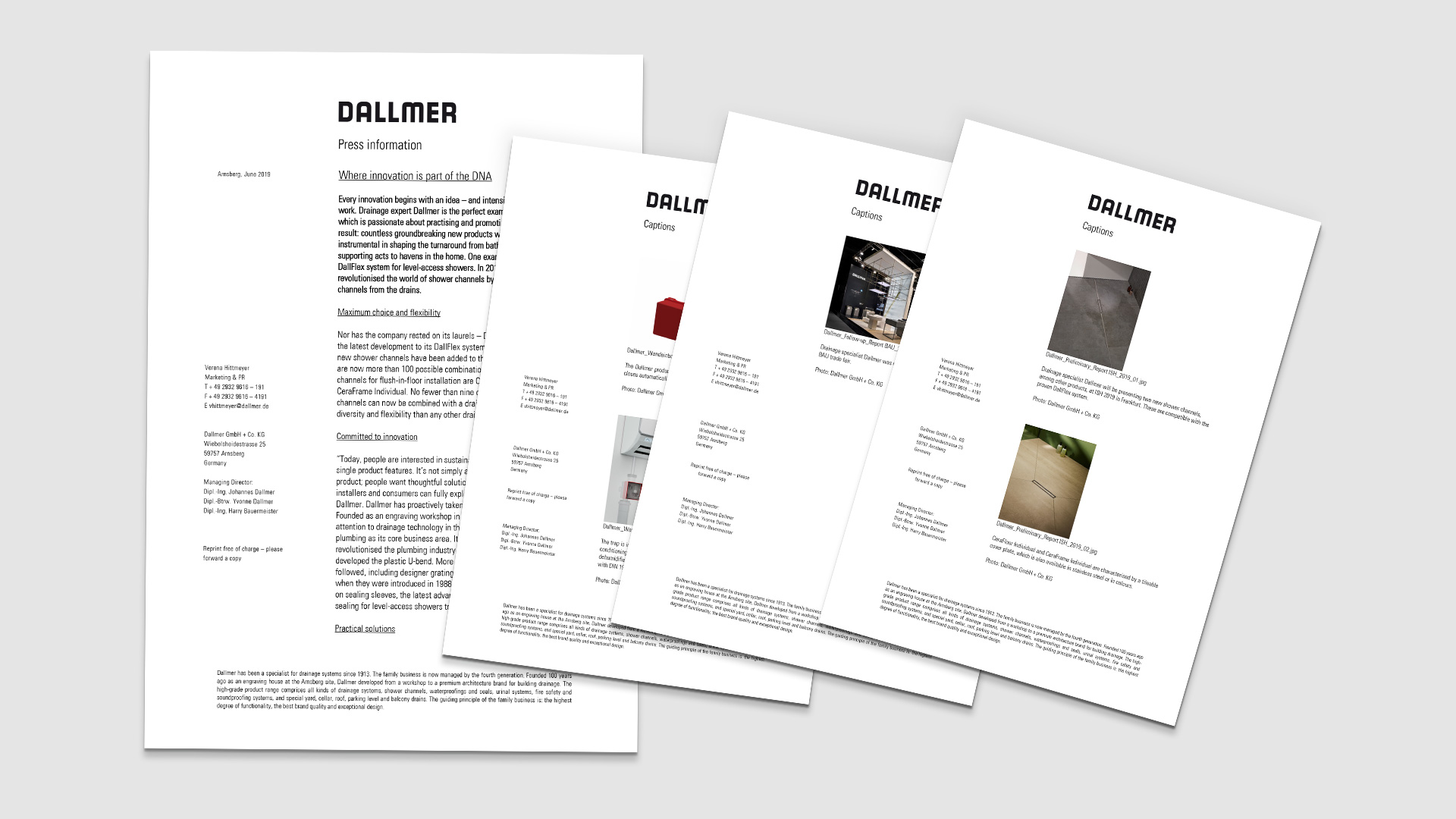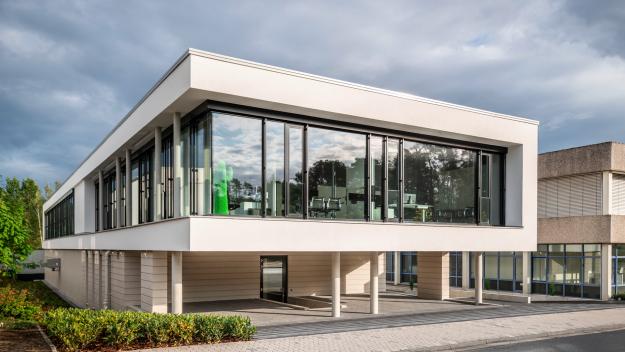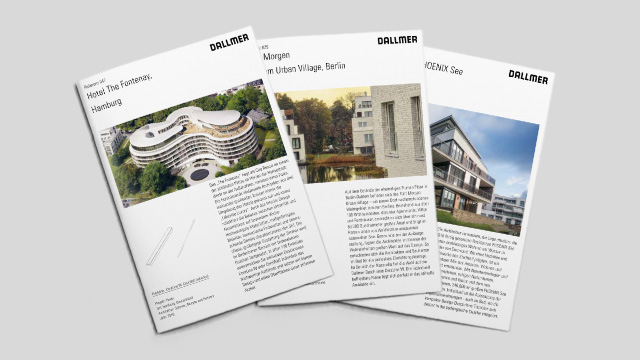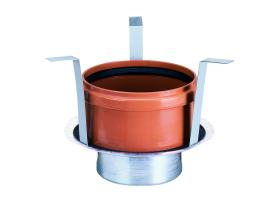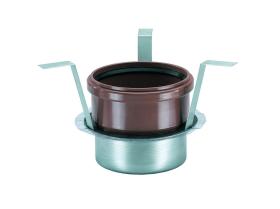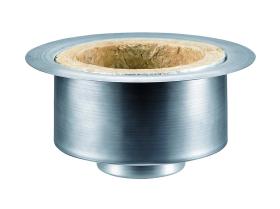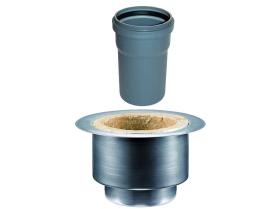Compact knowledge - Fire insulation for roof drains
At a glance
- Preventive fire insulation
The term for all organisational, constructional and technical measures designed to prevent the outbreak and spread of fires. This includes the compliant safeguarding of pipes and ceiling feedthroughs. - Fire insulation for flat roofs
There are specially engineered fire insulation elements for concrete surfaces and steel trapezoidal-profiled roofs. The basic operating principle is always the same.
- Pipe bushings
Fire insulation elements fitted with a swelling agent (material which foams in case of fire) ensure that plastic roof drains safely are sealed in the event of fire. - Fire resistance class / duration
The fire resistance class of a component provides information on how long it can withstand a fire. The classification is defined in the standards DIN 4102-2 and DIN EN 13501-2.
Fire insulation in flat roof drainage
Within the context of preventive fire insulation, plastic floor drains with a vertical outlet are regarded as pipe / ceiling feedthroughs that require sealing off. Otherwise, in the case of flats roofs, the fire can jump to the roof via the roof drains. In order to prevent this, it must be possible to professionally seal all feedthroughs of this type in compliance with the pertinent standards.
The same applies to floor drains. In this case, flames and smoke can spread very quickly via the wastewater pipes and set fire to further storeys. You will find more on the subject of fire insulation for floor drains here.
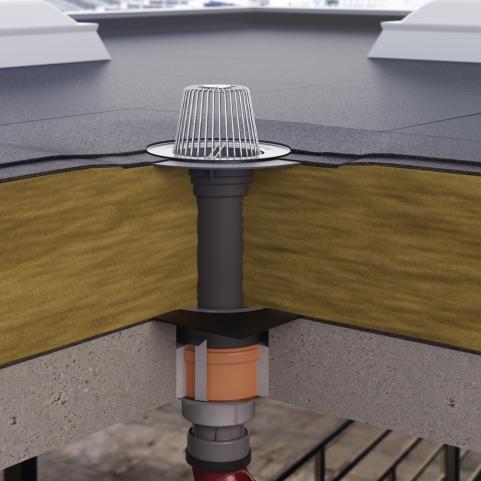
Fire insulation for roof drains in concrete surfaces
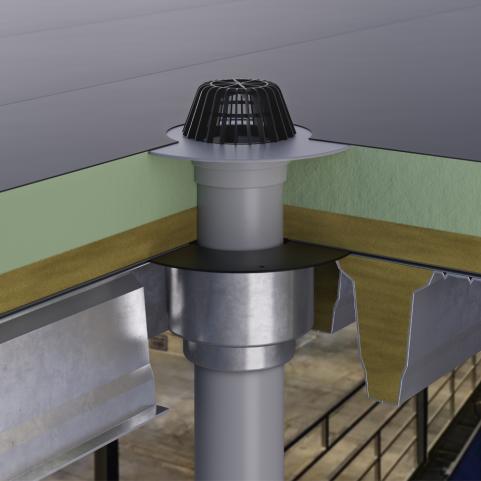
Fire insulation for roof drains in steel trapezoidal-profiled roofs
Construction legislation requirements and standards
Fire insulation for roof drains in concrete surfaces

Fire insulating structural element 1 with roof drain 62 DallBit, raising piece 630 DallBit and stainless steel domed grate
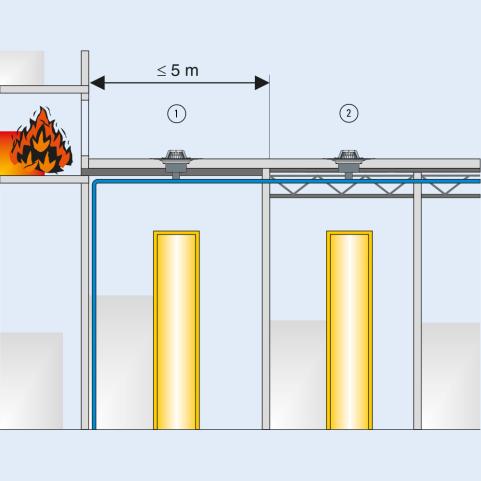
1. F 30/60/90 requirement
2. Requirements according to DIN 18234 (≥ 2500 m2)
If the roof drains and feedthroughs in ceilings with fire resistance duration requirements (F 30/60/90) are installed up to 5 m away from a rising external wall with openings, such as doors / windows, then it must be assumed that the components will be exposed to fire from above and below. The fire resistance duration of the feedthrough must correspond to the fire resistance duration of the component in which it is installed.
Fire insulation for roof drains in concrete surfaces R 30/60/90/120
Dallmer supplies a fire insulation system for flat roofs comprising a special fire insulating structural element which accommodates a standard roof drain 62 DN 70 with domed grate. The fire insulation system has been tested by the North Rhine Westphalia Material Testing Department and approved for construction by DIBt (German Institute for Construction Engineering) under the number Z-19.17-1800. It provides a reliable fire insulation solution R 30/60/90 with roof drains without water trap for solid flat roofs and is compatible with all common types of roof waterproofing.
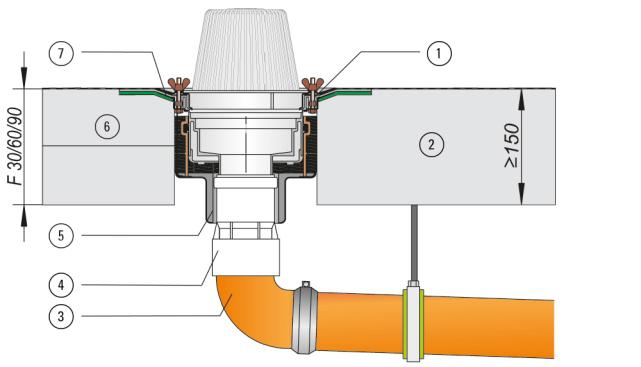
Dallmer's certified fire insulation elements for flat roof drains offer the following:
- Building Approval (Z-19.17-1800)
- System solution in quality R 30/60/90
- Installation of roof drains in F 30 to F 90 ceilings
- Connection to all common roof membranes made of bitumen and plastic
- Installation without the need for tools or screws
- Back filling without the need for any lower formwork
- A galvanised metal disk as lower cover plate
- Ultra-low build height
Fire insulation with roof drain
abZ Z-19.17-1800
- Drain
- Concrete surface
- Non-combustible pipe, e.g. SML pipe
- HT/SML coupling
- Fire insulating structural element
- Mortar MG II/III
- Sound insulation collar
Fire insulation for roof drains in steel trapezoidal-profiled roofs (roof area ≥ 2500 m²)

Fire insulation element 11 trapezoidal steel with roof drain 62 PVC and raising piece 630 PVC
Dallmer fire insulation elements for steel trapezoidal-profiled roofs have been successfully tested according to DIN 18234/IndBauRL at the research centre for fire insulation technology, Karlsruher Institut für Technologie.
In the construction sector, steel trapezoidal-profiled roofs are often used for large roof areas. They are lightweight, easy to handle and enable fast construction. In terms of fire insulation, they are subject to special provisions due to their geometric properties. These are regulated in industrial construction directive DIN 18234 and are therefore generally binding. In such cases, the risk assessment is carried out by means of a system test of the overall roof structure and not just taking account of individual materials or components.
In this case, particular attention needs to be paid to penetrations, e.g. roof drains, in order to prevent the spread of fire via the roof. The fire insulation element trapezoidal steel 12, which is suspended in the trapezoidal steel construction, is available specifically for these roof structures. This way the insulating materials can connect to the drain body. The function elements based on approval no. 2-19.17-1800 contain a swelling agent which reliably closes off the roof feedthrough and seals it off from below in case of fire.
Note: Important for roofers: Our plastic roof drains 62 and Super-Drain 62 can be used in combination with the trapezoidal steel fire insulation element for roof drainage in accordance with the construction regulations on fire insulation on lightweight roofs. The tested and certified Dallmer systems ensure maximum safety for planners and installation engineers.
Industrial construction directive and requirements for pipe sleeves
The industrial construction directive (IndBauRL) regulates the minimum requirements for fire insulation of all industrial buildings. The IndBauRL becomes generally binding with the publishing in individual federal states in the field of the Model Administrative Regulation for Technical Construction Rules (MVV TB).
Minimum requirements for fire insulation according to the industrial construction regulation in particular for:
- The fire resistance of the components and the flammability of the building materials
- The size of the fire zones and fire fighting zones
- The arrangement, position and length of the escape routes
Note: Industrial buildings which meet the requirements of this directive comply with the safety objectives of the Model Building Code MBO §14.
Requirements
Requirements for fire insulation pipe sleeves
Particular focus must also be placed on the roof penetrations (roof drain) of trapezoidal flat roofs. In this case it is necessary to prevent flames and gases from entering into the hollow profile section. In case of fire exposure from the underside of the roof, and if the roof penetration has been implemented improperly, the fire will spread in the roof structure. DIN 18234 defines constructional fire insulation measures for large area roofs in case of exposure from below.
DIN 18234:2003-9
- Part 1: Definitions, requirements and tests; Roof areas without openings.
- Part 2: List of roofs, which fulfil the requirements of DIN 18234-1 without further provision of evidence - Roof areas.
- Part 3: Roof penetrations and roof edges - Requirements and testing.
- Part 4: List of roof penetrations and roof edges, which fulfil the requirements of DIN 18234-3 without further provision of evidence.
If the feedthroughs are combustible, fire insulation collars must be installed underneath the ceiling in order to prevent fire burning through in the roof area. For trapezoidal sheet roofs, moulded parts made of mineral fibre materials, melting point > 1000°C, volume weight approx. 150 kg/m³, and a retaining plate in the area of the feedthrough must be installed.
Note on DIN 18234 / DIN 4102:
The installation of fire insulation collars, approved according to DIN 4102, in solid ceilings cannot be used to reliably seal roof penetrations according to DIN 18234-2: in case of a fire scenario according to DIN 18234-3 a flame impingement curve is set which has to be assessed with regard to the effects of fire in the first 20 minutes as sharper than the standard temperature curve according to DIN 4102-2.
Use of fire insulation collars:
For reliable certification, additional fire testing according to DIN 18234 is required. The Dallmer former of insulating material has been tested according to DIN 4102 in concrete surfaces and according to DIN 18234 for trapezoidal sheet metal roofs.
Temperature-flame impingement curves according to DIN 18234 / DIN 4102
Successful testing according to DIN 18234 / IndBauRL at the research centre for fire insulation technology, Karlsruher Institut für Technologie
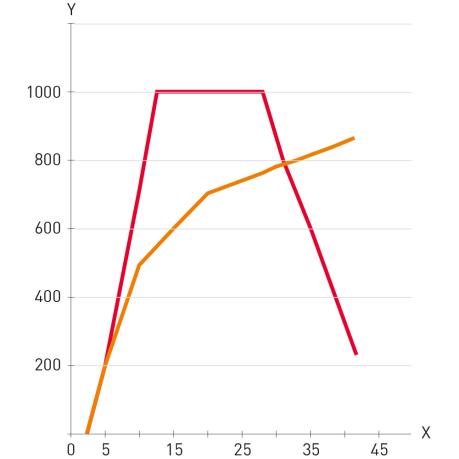
Y = degrees Celsius
X = time in minutes

DIN 18234

Standard temperature curve according to DIN 4102
Installation note: The roof-mounted insulation in the area of the feedthrough must be implemented in non-combustible quality, e.g. mineral fibre insulation, melting point >1000°C or phenol resin foam according to DIN 18164-1. An area of 1 m² must be provided in the process. The penetration must be position centrally. Other materials are permitted if reliable certification of suitability for use is provided.
Standards and directives
Industrial construction directive
The industrial construction directive (IndBauRL) regulates the minimum requirements for fire insulation of all industrial buildings.
Model Building Code
Is published by the committee of ministers and senators of the 16 federal states responsible for urban development, construction housing (ARGEBAU).
Model Administrative Regulation for Technical Construction Rules
MVV TB represents an important addition to the Regional Building Codes (LBO). The Regional Building Codes regulate planning, dimensioning and implementation of structures and the use of construction products. They also formulate general requirements which are put into concrete terms by MVV TB and clarified with reference to the valid technical rules.
DIN 18234 defines constructional fire insulation measures for large area roofs in case of exposure from below. DIN 18234 is broken down into four parts:
- Part 1: Definitions, requirements and tests; Roof areas without openings
- Part 2: List of roofs, which fulfil the requirements of DIN 18234-1 without further provision of evidence - Roof areas.
- Part 3: Roof penetrations and roof edges - Requirements and testing
- Part 4: List of roof penetrations and roof edges, which fulfil the requirements of DIN 18234-3 without further provision of evidence.
This standard refers to the fire behaviour of components and materials. It defines the fire resistance classes of materials to be used in house technology and how the components and materials are to be tested.
Glossary
Fire insulation includes all measures that contribute towards the prevention and control of fires. Because this is a broad and complex field, different types of fire insulation are divided into the following categories:
- Preventive fire insulation
Concrete measures that contribute towards enabling a fire to be extinguished as quickly as possible and that help save people and animals. - Technical fire insulation
All technical systems that help fire prevention, fire detection and fire suppression – typical examples are smoke detectors, automatic extinguishing systems and smoke and heat extraction systems. - Structural fire insulation
This specifies the materials and components that may be used and how emergency escape routes and extinguishing systems are to be planned. - Organisational fire insulation
Fire officers and company training on the topic of fire insulation fall under the heading of organisational fire insulation. - Defensive fire insulation
All concrete measures aimed at preventing fires and stopping the spread of fires.
As per DIN 4102 and DIN EN 13501, building products are divided into different classes, depending on how long they retain their functionality when exposed to heat.
Relevant products
Downloads
Further downloads
Brochures, references, data sheets, etc. are available in our Download section.
Dated: November 2020










